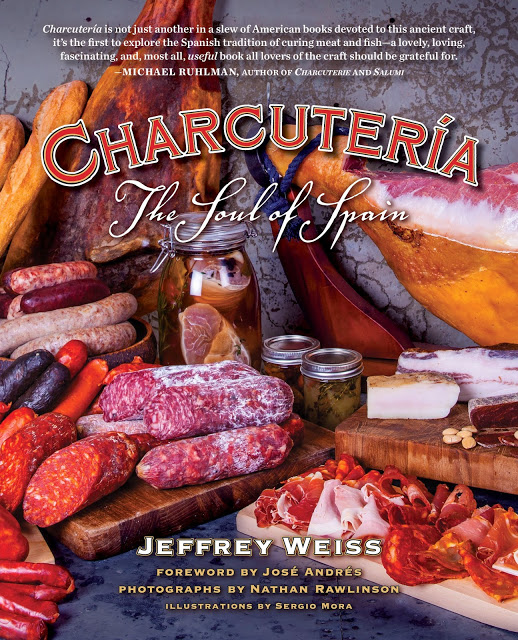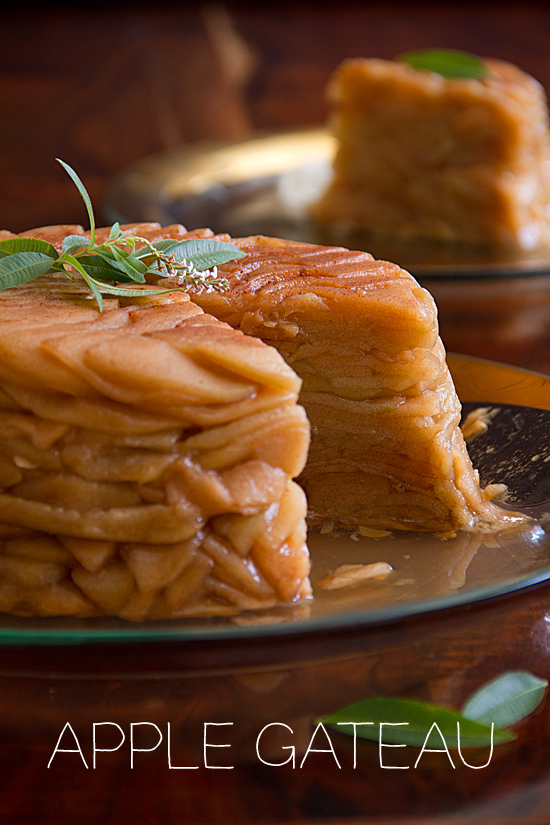
Chorizo or chorizo? What’s the difference? It’s a confusing question that I’ll try to answer in a moment.
To a Spainard “chorizo is the first station of the holy charcuteria cross”. This is a quote from the new book, Charcuteria: The Soul of Spain by Jeffrey Weiss (Surrey Books, 2014). It’s an encyclopedic manual– full of recipes, facts and a stunning amount of first-hand appreciation for this broad category of Spanish-style cured meat. I was sent a copy for review.
All cultures have some sort of cured meat products that they consider integral to their food traditions. Before refrigeration, curing meat was the only way to ensure an ongoing supply. So most cultures learned to cure.
That said, there is an argument to be made that chorizo, over the course of history, had had the greatest influence in the evolution of cured meats. Which is exactly the argument Mr. Weiss makes in this beautifully detailed 460 page book.
According to the author, “Nearly every Latino culture –and every other nation throughout the new world visited and pillaged by conquistadors– has some version of this very basic combination of ground meat, fat, salt, and spices as part of their modern day gastronomy”.
Which explains the confusion many people face when confronted with a recipe that calls for chorizo. It’s particularly confusing to those of us from Southern California who might only be familiar with the Mexican version.
That’s because the word chorizo has become “rather ambiguous”. In its most basic translation it merely means “sausage”.
Chorizo Styles
Let’s start with the Mexican style. It’s based on the same principal as fresh, uncooked Spanish chorizo. The grind of meat is rather more fine than the (usually) chunkier styles found in Spanish chorizos. The spices are typically different as well. Mexican chorizo must be cooked before it’s used in most recipes. Good recipes will usually distinguish whether they are calling for Mexican or Spanish-style. Still, you should familiarize yourself with the differences because the success or failure of that recipe could rest with the choice you make.
However, it’s not quite as simple as Mexican or Spanish either. There are differences between Spanish-style chorizos too.
The best chorizos are an artisan product, so the hand of the maker goes a long way in distinguishing the taste and texture. In Spain there are regional differences too. There are even slightly different spellings of this beloved sausage (chorizo, chorizu, txorizo, chourizo and xoriço). However, no matter the pedigree, Spanish chorizos are mostly divided into four categories: picadillo, fresco, semicurado and curado.
Picadillo is a loose chorizo (no casings) style that is seasoned with paprika and other spices. It can be fried in a pan before using (as in Mexican chorizo) or it can be stuffed raw into a casing to become fresco chorizo. If the fresco chorizo is allowed to ferment slightly then it becomes semicurado chorizo. This style is typical to Northern Spain.
Lastly there is the curado (dry-cured) chorizo that most of us associate with a charcuteria plate. It’s an important component of tapas as it can be thinly sliced and enjoyed with a variety of accompaniments.
To further complicate things chorizo is not denominación de origen (DO, designated of authentic geographic origin such as Jamón Iberico) so many sausages from many different countries can be labeled chorizo. Which doesn’t make them bad, but it does mean it’s harder to know what you’re getting. When choosing non-Spanish Spanish-style chorizo it’s helpful to know what you are looking for, and what the final usage may be. I was recently sent a sample of Imperial Chorizo. Which I can say has all the qualities I look for in a curado chorizo. It’s dry-cured with no heat for over 5 weeks. It’s all pork and is spiced with authentic pimentón from Spain. So if you are still confused and are looking for a delicious chorizo ready to be sliced and enjoyed I recommend it. GREG




Spain is a Galaxy of different chorizos with diferentes meats and cured times and systems.Is a paradaise for the lovers of the best chorizos in the world.
Due to my silly garlic allergy, I am relegated to making homemade chorizo such as the Mexican or Sonoran (also Mexican, I guess) styles. I don’t suffer too badly, I guess… The book looks beautiful! Can’t wai for your recipes… so much good charcuterie from Spain…
Good info. I tend to prefer Mexican-style chorizo, but some dishes just cry out for Spanish style. I kinda sorta knew about the differences, but thanks for filling in the (considerable) blanks.
Had hoped there would be recipes so we could try the difference ourselves
I might try some recipes from this book in the future and share them here. GREG
Thanks so much for the explanation. I love chorizo and am often confused. Through a process of elimination I have found the brand of picadillo and curado that I like. But your photo has convinced me to take a closer look at Imperial Chorizo.
You have just named Mr. ST’s favorite food!